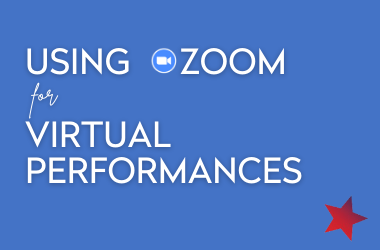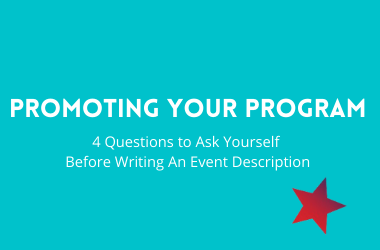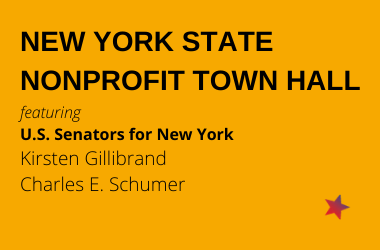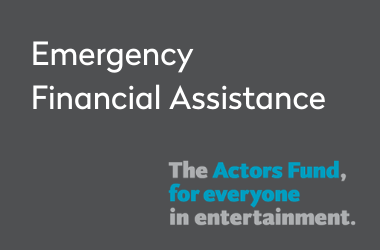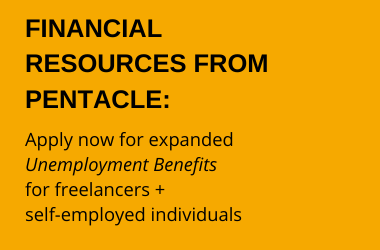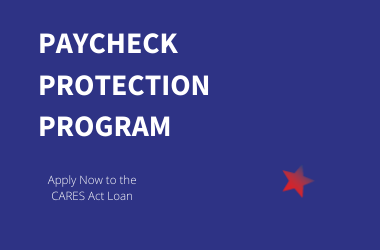Grant Writing for Individual Artists: Writing an Artistic Statement
Writing a Statement
A good artistic statement describes how you – or your company – works and what your work means. This can be daunting because it isn’t always easy to describe your work and verbalize what may be very conceptual ideas. But it’s an important piece of writing that can help you define the relationship between you and your art, and provide a way for your audience – and funders – to connect with your work.
What is an Artistic Statement?
Your artistic statement is unique to you. It’s a reflection of you and your art, and it should be written from your perspective to explain the meaning and purpose behind your work. This doesn’t mean that you can’t get inspiration from other artistic statements – in fact, it can be very helpful to read how other artists, of all disciplines, define their work. For example, the below artistic statements capture the true meaning and essence of the artistic entities.
Examples of good artistic statements:
Ephrat Asherie Dance (EAD) is a dance company rooted in African American and Latinx street and social dances. Dedicated to revealing the inherent complexities of these forms, EAD explores the expansive narrative qualities of various street and club styles including breaking, hip hop, house and vogue, as a means to tell stories, develop innovative imagery, and find new modes of expression. https://www.ephratasheriedance.com/mission-statement
For 34 years, David Dorfman has created movement that seeks to de-stigmatize the notion of accessibility and interaction in post-modern dance by embracing audiences with visceral, meaningful dance, music and text. By sustaining a vision to create innovative, inclusive, movement-based performance that is radically humanistic, DDD maintains a core commitment to examine and unearth issues and ideas that enliven, incite and excite audiences in dialogue and debate about social change and a myriad of other topics. http://www.daviddorfmandance.org/
Urban Bush Women seeks to bring the untold and under-told histories and stories of disenfranchised people to light through dance. We do this from a woman-centered perspective and as members of the African Diaspora community in order to create a more equitable balance of power in the dance world and beyond. https://www.urbanbushwomen.org/about-ubw
How to begin writing your artistic statement
As you look at other artistic statements, what makes sense to you? Is there a structure or style you like? Consider these as you begin drafting your artistic statement – these writing prompts will help you get started. If it’s easier for you to talk about your ideas rather than write about your ideas, ask a good friend or colleague to use these as interview questions.
Describe yourself as an artist:
- What is your artistic discipline or medium?
- What/who are your major influences?
- What motivates you to create?
- What makes you and your work unique?
- What are your sources of inspiration?
Describe your artistic work:
- What are you doing?
- How are you doing it?
- Why are you doing it?
- What is your artistic process?
- What/who are your major influences?
- What motivates you to create?
- What are you trying to convey to other people?
- What do you want people to understand from your work?
- How does your art relate to other artists? To society?
Start fleshing out your ideas. Try not to use a lot of jargon or abstract language – you want your statement to be as accessible as possible. Once you’ve written, and re-written, and edited your statement, share it with a friend and use their feedback to refine it further.
How long should an artistic statement be?
Your artistic statement doesn’t need to be long – it can be anywhere from 100 words to a page. When you’re using it as part of a grant proposal, the length of your statement will be limited to a certain number of words or characters but don’t feel that you need to use them all.
How can I use my artistic statement?
Once you’ve drafted a strong artistic statement that you are comfortable with and that you feel truly represents you as an artist, it can be used in your biography, in project descriptions, on your website, in media releases and anywhere else you need to describe your work.
Pentacle remains dedicated to continuing to provide a high level of support to artists during these extraordinary circumstances. Alongside many other key and respected organizations in the field, we have begun accumulating and curating resources for artists and organizations experiencing income loss and other troubles as a result of the COVID-19 crisis. Find help at Financial Urgent Care.
Artistic statement resources:
8 artistic statements we love: https://www.theartleague.org/blog/2015/08/24/8-artist-statements-we-love/
How to write an artistic statement: https://thecreativeindependent.com/guides/how-to-write-an-artist-statement/
Artistic statements: a quick guide: https://artspartner.org/files/all/artists_statement_bio_info.pdf
What is an artistic statement? Where can I find samples?: https://learning.candid.org/resources/knowledge-base/artists-statements/
NEXTSTEPS GUEST AUTHOR: SUSAN LATHAM | 11.30.20
Susan Latham is a professional fundraiser with experience in the performing arts, human services and higher education. She is a member of Pentacle’s Board of Directors.
Related Blog Posts
Using Zoom for Virtual Performances
Using Zoom for Virtual Performances Zoom during the Covid-19 Pandemic Due to the rapid rise of virtual meetings in the past nine months of the COVID-19 pandemic, the use of Zoom technology has increased dramatically. Zoom is a platform designed for use by people who...
Promoting Your Program: 4 Questions to Ask Yourself Before Writing An Event Description
Promoting Your Program: 4 Questions to Ask Yourself Before Writing An Event DescriptionHow to Write an Event Description While it’s not easy to perform for a captive audience, it’s even worse to hold an event and find no one watching! The key to filling the house...
COVID-related Nonprofit Town Hall with Senator Kirsten Gillibrand and Senator Chuck E. Schumer
COVID-related Nonprofit Town Hall with Senator Kirsten Gillibrand and Senator Chuck SchumerSTAYING UPDATED ON BEHALF OF OUR COMMUNITY On Wednesday, April 29th, 2020 Minority Leader Senator Chuck Schumer and Senator Kirsten...
The Actors Fund Emergency Financial Assistance
The Actors Fund Emergency Financial AssistanceApply For Emergency Funds through The Actors Fund Pentacle remains dedicated to continuing to provide a high level of support to artists during these extraordinary circumstances. Alongside many other key and respected...
Unemployment Benefits Extended for Freelancers
Unemployment Benefits Extended for FreelancersLearn more about how you can apply for Unemployment Insurance As businesses have closed and vital streams of income have been cut short for performing arts companies across the country amid the coronavirus pandemic, there...
Paycheck Protection Program (PPP)
Apply Now to CARES Act LoanPentacle remains dedicated to continuing to provide a high level of support to artists during these extraordinary circumstances. Alongside many other key and respected organizations in the field, we have begun accumulating and curating...
Pentacle’s nextSteps is supported, in part, by public funds from the National Endowment for the Arts, the New York State Council on the Arts with the support of Governor Andrew M. Cuomo and the New York State Legislature, and the New York City Department of Cultural Affairs in partnership with the City Council. Pentacle receives private support for nextSteps from the Booth Ferris Foundation, the Howard Gilman Foundation, the Rockefeller Brothers Fund, and the New York Community Trust.


